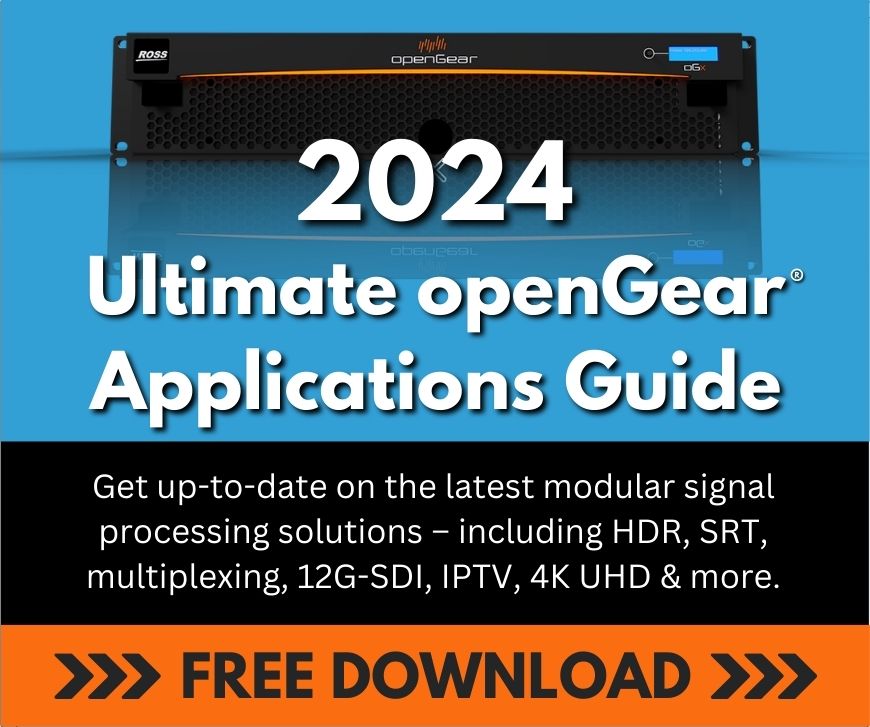Jesse Foster discussed MultiDyne’s products, including the popular high-density OG-4600 card, on KitPlus TV. For more about MultiDyne products, email Jesse at sales@multidyne.com or visit www.multidyne.com.
Matt Robbins:
Hello, and welcome to another KitPlus TV show. Today we are continuing our series of openGear discussions and are delighted to welcome Jesse Foster from MultiDyne. Hi Jesse, welcome to the show.
Jesse Foster:
Hi, thanks for having us.
Matt Robbins:
Normally we’d be catching up at NAB at this time of year, sadly, that wasn’t to be this year, but perhaps to start off, you can give us a rundown of what we would’ve been talking to you about at the show.
Jesse Foster:
Excellent. Yeah, in the openGear context, we were going to have a technology demonstration of a ST-2110 gateway that we have hosted on a range of our openGear cards, but specifically the OG-4600 product is really our flagship solution in the openGear space currently. I like to kind of just give an overview of the range as it stands today. So down in the bottom right hand corner is the ST-2110 gateway products. There’ll be multi-channel, 3G and 12G versions. That will be out probably the beginning of next year, in the lab currently. You see a range of audio conversion, A to D, D to A’s, we got a really popular line of distribution amps, including balanced AES, unbalanced AES, and balanced analog, which are really popular gap fillers in the openGear range. But the most exciting part of the range, in my opinion, is our fiber gear, is the OG-4600 that you see there.
What that does for us is really brings the camera adapter line, so we have a really comprehensive transport solution for production signals, in essence, that’s in different form factors than openGear, but this is the openGear answer to that capability feature set that we have in other platforms. That’s the full up rear module that you see there. It essentially allows for, let’s see, this is a cascade application, so we can do onboard CWDM muxing and get 18, 12GSDI’s on one fiber with no external mux’s needed. And that’s representative of a version of the OG-4600. It’s a scalable platform. You don’t need to get features that you don’t need for a particular application. But at the high end card here, you see it’s very comprehensive in that it can do eight analog or four AES pair bidirectional, does gigabit ethernet, genlock, time code, serial data tally, and then up to four 12G or 6G, 3G SDIs in unidirectional or bidirectional configuration.
This card is also compatible with other versions of products in our system. This is a very popular use case that we have going with Google, Apple, multiple high end customers, all the way down to schools and municipalities. The VB product is a versatile bricks modular card platform that you can get up to 10 cards in the VB10 or 6 in the VB6. So it’s, again, it’s scalable, just like the openGear card, you can just really pick and choose what you want. And for this application for PTZ, we have a new rear module that is standard width, which is two slots in the openGear platform, out of 20. So you can get 10 of these cards in a 2RU frame, and in the rack room, you get all of the benefits of openGear when it comes to dashboard, control and monitoring, you get redundant power, additional cooling, capacity.
This card actually will take genlock from the genlock bus in the openGear frame and single genlock into the frame, and we can get 10 discrete genlock transports to 10 separate cameras, all from that genlock bus, that’s internal to the frame. So, really high density, really popular in these next-generation venues where there’s a lot of PTZ robotic infrastructure that 10 cards and one 2RU frame is really popular for us. And then further to that message, same project actually, we have our LightBox system, which is a Pelican case, ruggedized for field use, all going back to the rack room. And then you could even patch this, because this is just a single mode fiber, all this stuff goes bi-directional with this card set and these companion products. So in the patch bay you can really optimize what you can pull off with the fewer amount of cards to multiple locations around the campus and such.
So that’s the LightBox side of it. And then on the other end, I mentioned the camera adapter range, is really where we pioneered all of this signal transport technology. We can now co-mingle the camera adapter with the openGear card. And the camera adapter is really popular, currently in the market, for making digital cinema cameras like the Sony Venice or the Red Komodo on another end of it or Panasonic VariCam LT. Really all these large format sensor cameras are being used for live multi-cam production, and we have it dedicated to our u-base station, but if you wanted to go openGear, you can get three systems in 2RU, and you get the single mode, fiber extension, you do 10 kilometers easy, right?
And then if you wanted to power to camera, then you hit our Juice platform, which then turns it to hybrid fiber and energizes that SMPTE 311 fiber empowered camera and all the accessories. And that capability is available in the VB and the LightBox. So, what you see here with that dual fiber application is available across the line. The 4600 is extremely popular based on its flexibility. It’s finding its way into a ton of different applications and rental market and so forth. That’s one of the main things I would’ve been focused on at NAB if we were there.
Simon Tillyer:
I can see from what you’ve said there, that by leveraging what openGear offers, you can really expand the opportunities in a rack room and a facility, can’t you?
Jesse Foster:
Absolutely. Yeah. Because the companion to VB to VB, like we have redundant power coming from the VB, but currently it’s not there. The density that you can achieve with the openGear frame and 10 cards in a single frame, is really popular in the system design side of things for density and redundancy and all the things that openGear does really well. It brings that set of attributes to the camera extension and everything, so openGear… We were the ninth openGear partner, over 10 years ago, it’s a key focus of our design efforts based on it’s increasing popularity and what it brings to the customer.
Matt Robbins:
And are any of these systems in use yet? Have you got anything out there?
Jesse Foster:
Absolutely. Bexil, NEP, truck companies, like I mentioned, Apple and Google, Google’s just being shipped now, but quite a few applications. This card’s been around for, in the 12G version, it’s been around about two years and before that there’s a 3G version available, so definitely widely deployed.
Simon Tillyer:
So I think last time when we spoke in depth with MultiDyne was probably way back at NAB 2019. And I always enjoy going to central hall and seeing everything that MultiDyne have got to offer, because you do offer so many different cards for so many different solutions. Is there anything else that you would’ve been shouting about this year at NAB?
Jesse Foster:
Really, adding to the range that we touched on previous there, we have a new 12GDA coming out and it’ll have passive relay protection on the rear module, which is a unique offering in the openGear line for 12G distribution amp with passive relay. Other than that, the ST-2110 demo would’ve been there. And all of this is available in the new year, January timeframe, we’ll be able to do demos and ship things out. And I’m doing customer visits as often as possible, I’m in the Los Angeles area, so if anybody’s interested any of these for a demo or just a in-depth run-through, I’m available.
Simon Tillyer:
Just before we end, where can people find out more, if they want to find out more, before, hopefully, we see you in Vegas in April 2022.
Jesse Foster:
That’d be multidyne.com for videos and application drawings and data sheets or email sales@multidyne.com for more info.
Simon Tillyer:
Excellent. Thank you very much, indeed. And thanks to Mediaproxy for this Port Plus TV. Thank you for watching and we’ll see you next time.
For more about MultiDyne products, email Jesse at sales@multidyne.com or visit www.multidyne.com.

